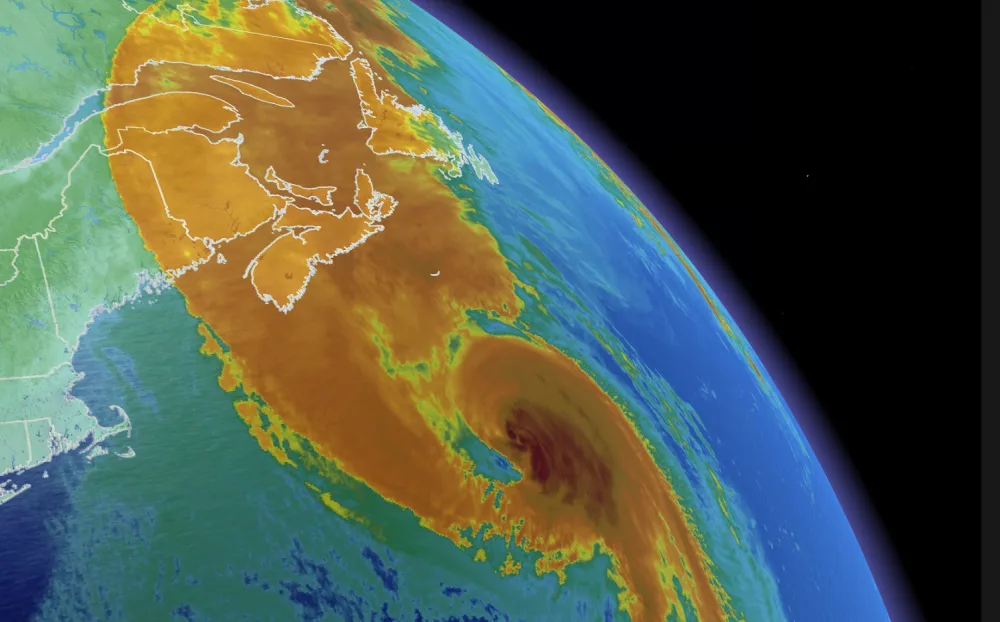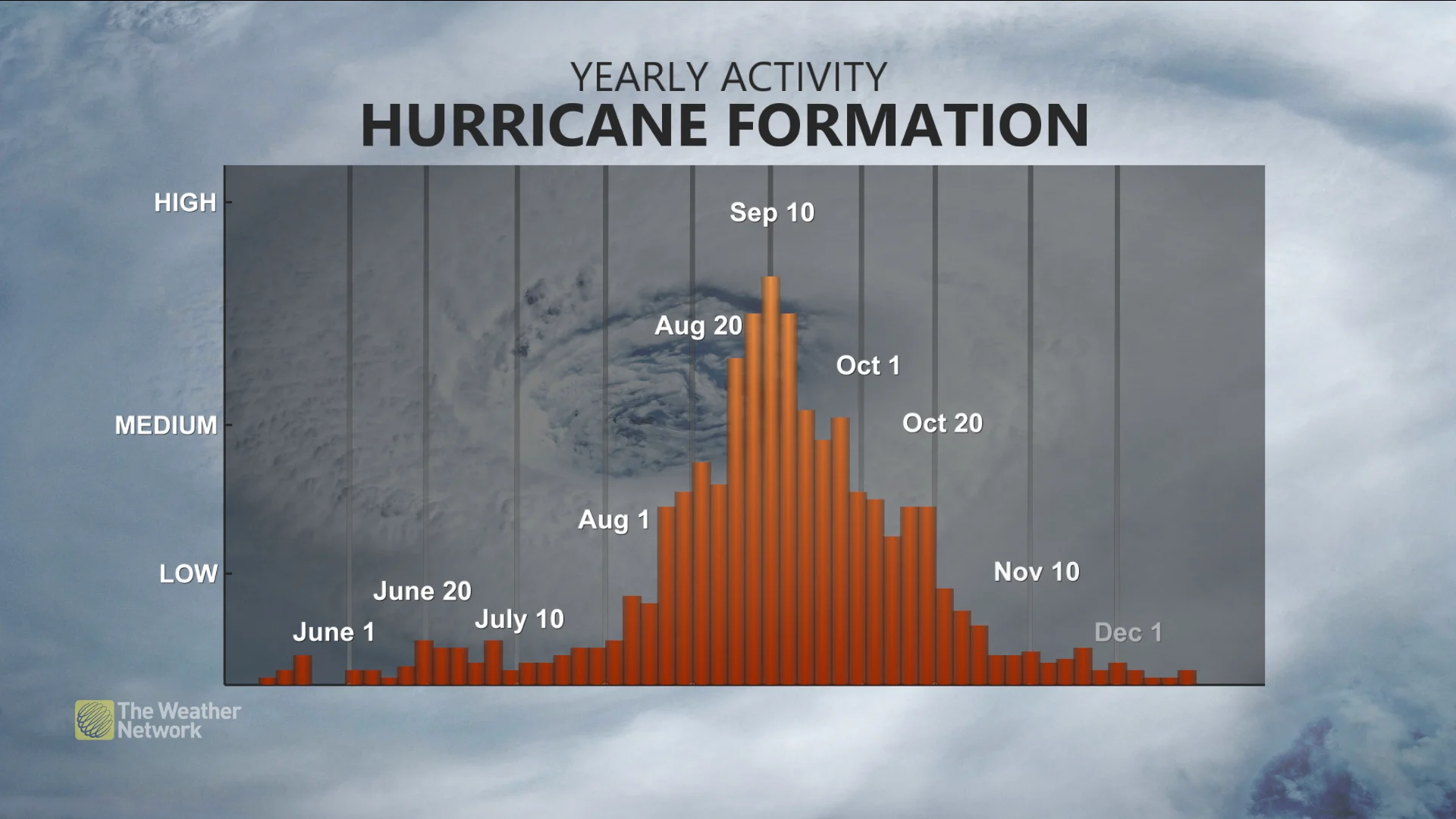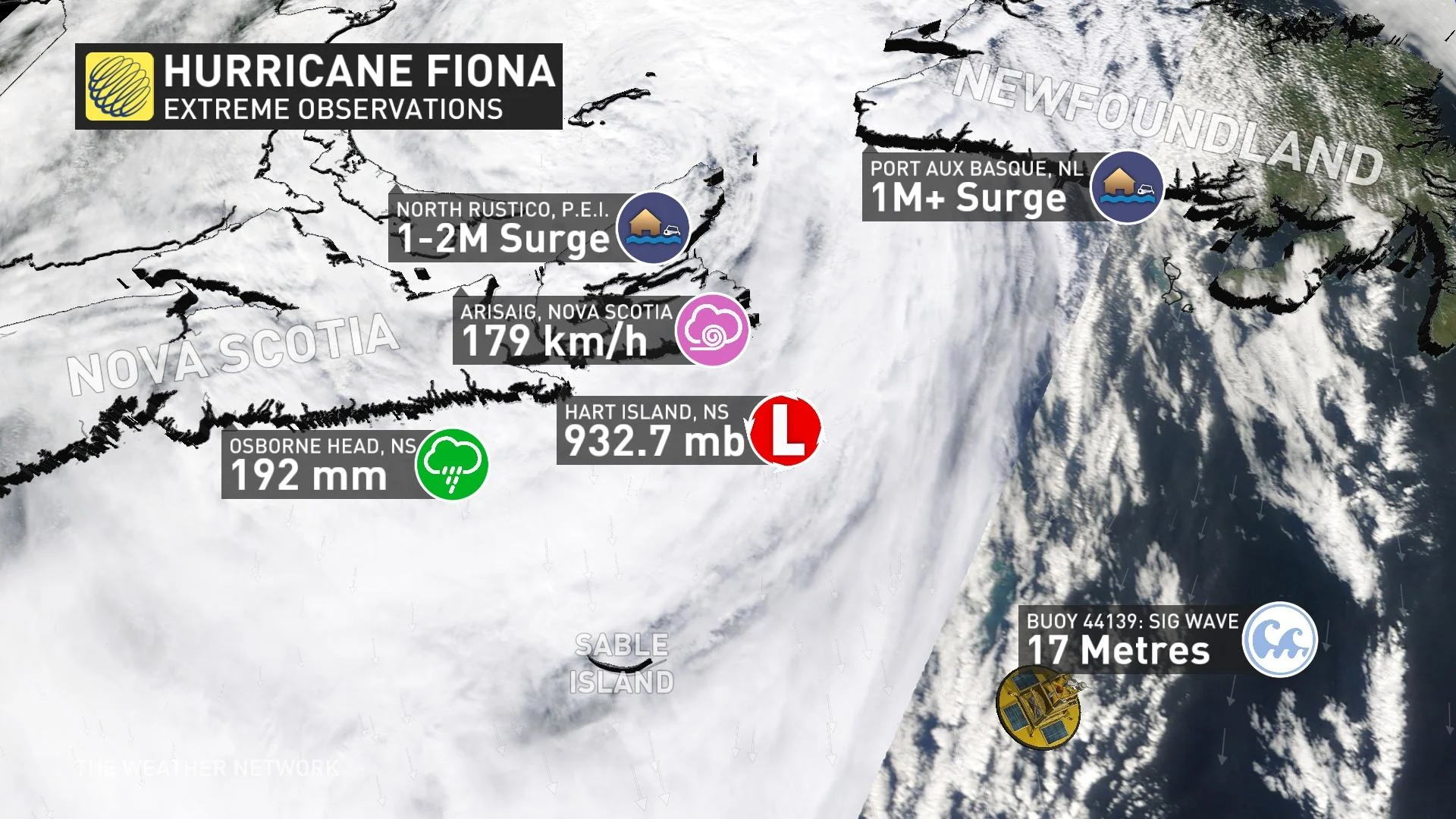
Fiona and Ian retired as hurricane names after devastating storms
Fiona and Ian are the 95th and 96th storm names to be retired since the modern naming system began 70 years ago.
No hurricanes named Fiona or Ian will ever roll across the Atlantic Ocean again.
In light of the extreme toll those two hurricanes took on Atlantic Canada and Florida in September 2022, the World Meteorological Organization (WMO) announced Wednesday that Fiona and Ian are retired and won’t be used again to name tropical storms or hurricanes in the Atlantic basin.
The WMO, the branch of the United Nations responsible for setting global meteorological standards, meets annually to discuss potential changes to hurricane forecasting and storm names for the world’s ocean basins.
Officials at this year's meeting announced that the names Farrah and Idris would replace Fiona and Ian, respectively, when 2022’s list comes up for use again during the 2028 Atlantic hurricane season.
DON'T MISS: The curse of storm nine: Why so many “I” hurricanes are monsters
Storm names are serious business for forecasters—and survivors
The practice of naming storms is no small task—both for keeping track of storms and for the survivors of past tragedies.
A name can be retired from future use when that storm causes significant death or destruction, a practice born out of sensitivity for survivors to prevent confusion and distress during future hurricane seasons.
A storm doesn’t necessarily have to be a hurricane to warrant retirement. 2001’s Tropical Storm Allison was the last storm to receive that name after the system’s extreme flooding killed dozens of people in the southern United States.

Fiona and Ian are the 95th and 96th storm names retired in the Atlantic since modern naming conventions began in the early 1950s. “F” and “I” are the most common letters to see their names retired. Ian is the 14th I-storm to face retirement, with Fiona following close behind as the 10th “F” name taken out of circulation.
This dubious distinction is a result of the sixth and ninth named storms of an average hurricane season typically forming near the peak of the season in the first half of September.
WATCH: Shocking Fiona before & after photos show the fallout of the storm
Fiona left a historic mark on Atlantic Canada
Hurricane Fiona lashed Atlantic Canada in September 2022 as an intense post-tropical cyclone, making landfall on Nova Scotia’s Cape Breton with the characteristics of both a hurricane and a nor’easter.

Fiona’s evolution from a tropical cyclone to a post-tropical cyclone dramatically expanded the storm’s size and reach, allowing it to produce widespread damaging winds and flooding across the East Coast.
The storm cemented its place in history as the costliest storm ever recorded in Atlantic Canada, and Canada’s tenth-most expensive disaster on record. Coastal erosion from waves and storm surge took a harsh toll on southwestern Newfoundland, where more than 100 homes along the coast washed into the sea.
Ian was Florida’s deadliest hurricane in nearly a century
Hurricane Ian slammed into western Florida with an intensity that nearly topped the Saffir-Simpson wind scale, packing Category 4 winds of 240 km/h and a peak storm surge that reached higher than 4 m above ground level.
DON'T MISS: How hot water fuels the world’s most powerful hurricanes
Entire neighbourhoods were destroyed along coastal sections of southwestern Florida when Ian pushed into Charlotte Harbor on September 28, 2022. Tens of thousands of homes and businesses were severely damaged or destroyed by the hurricane’s intense winds and flooding, with the worst damage focused on Lee County, home to the cities of Fort Myers and Cape Coral.

The devastating storm claimed 149 lives in Florida alone, becoming Florida’s deadliest hurricane in nearly a century, and the deadliest tropical cyclone to hit the United States since Hurricane Sandy in 2012.
How a storm earns its name
Tropical storms and hurricanes in the Atlantic Ocean earn their names from a collection of alphabetical lists that repeat every six years. 2023’s list of names was last used in 2017, and it’ll be used again in 2029.
Each list has 21 names that alternate between masculine and feminine, with names derived from the predominant languages and cultures of countries that border the Atlantic.
The lists omit names starting with Q, U, X, Y, and Z for lack of common replacement names if one needs to be retired.
If a future hurricane season exhausts its assigned list and requires additional names, the WMO recently approved a supplemental list for any further storms that season. Previously, we had to rely on the Greek alphabet to name the 22nd storm and beyond, a contingency only used during the hyperactive 2005 and 2020 hurricane seasons.
The 2023 Atlantic hurricane season officially begins on June 1. The first couple of names on this year’s list are Arlene, Bret, Cindy, and Don.










